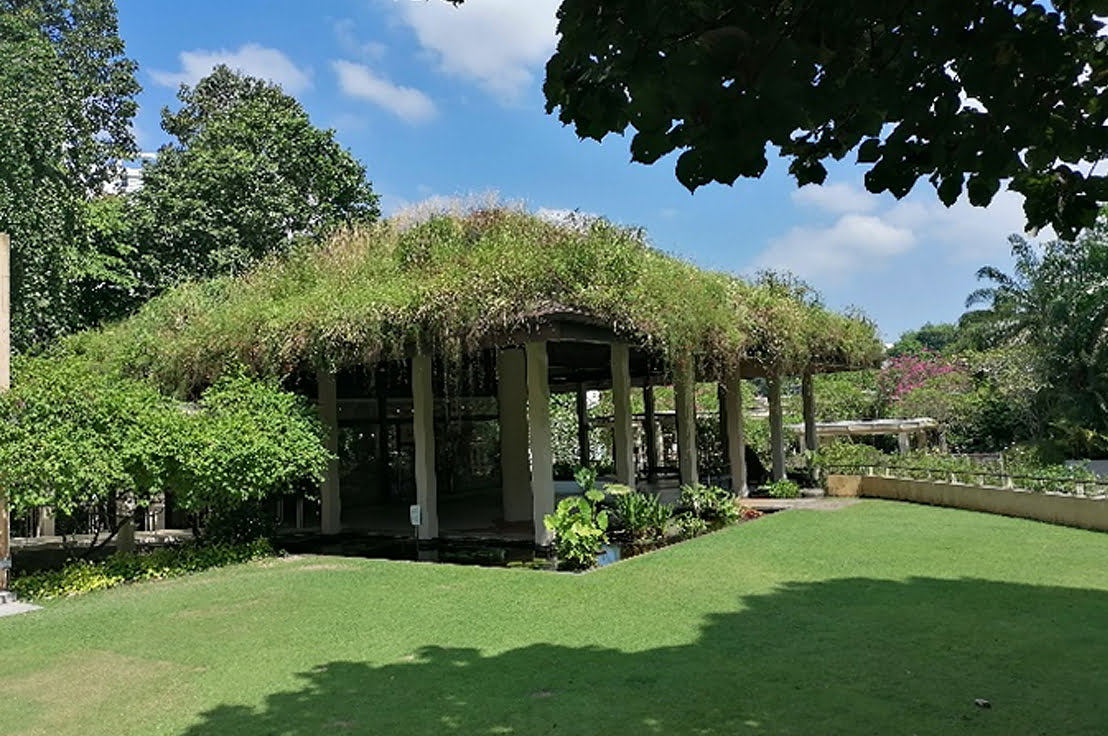
Green roofs, also known as living roofs or vegetated roofs, are roof systems that are partially or completely covered with vegetation such as plants, grasses, and sometimes even trees.
Combining nature and architecture, green roofs are a transformative innovation and turn rooftops into living, thriving ecosystems. They typically consist of multiple layers. The base layer is a waterproofing membrane that prevents water from penetrating the roof structure. On top of the membrane, there may be additional layers such as a root barrier, drainage layer, filter fabric, and a lightweight growing medium know as ‘green roof substrate’. The growing medium/substrate is specially engineered to be lightweight to reduce the load on the roof structure, while still providing sufficient nutrients and moisture for plant growth.
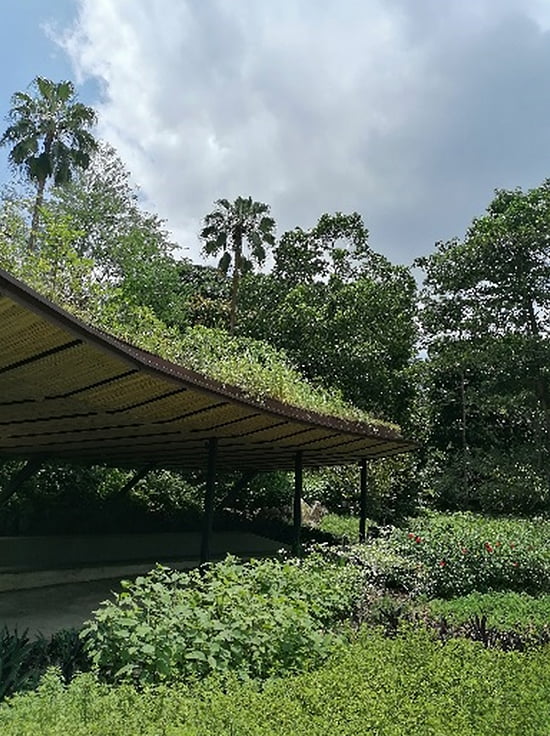
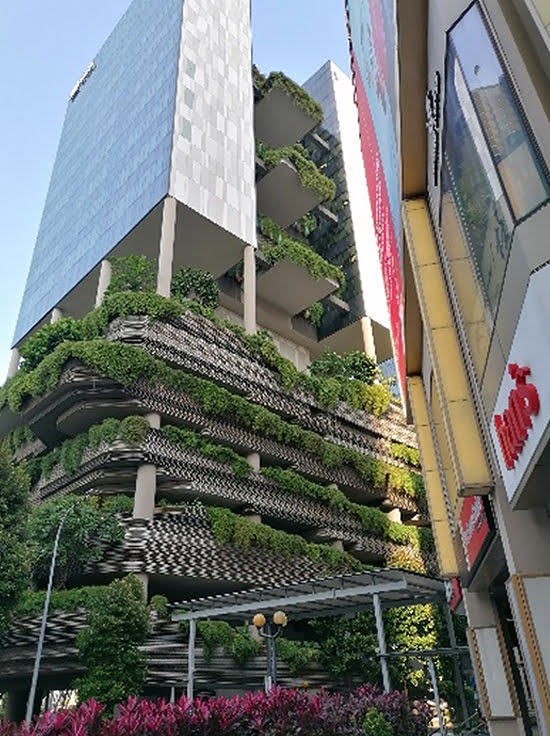
Green roofs can even be combined with water retentive structures known as blue roofs. This forms a blue-green roof which stores water in a shallow layer below the green roof. This water can then be used for irrigation of the green roof.
Green roofs provide a range of benefits to both nature and the community, including:
🌿 Air Purification
Green roofs act as natural air filter, absorbing sound, and physical pollutants from the atmosphere.
🌿 Urban Heat Reduction
Green roofs can help mitigate the urban heat island effect by cooling surrounding air. This can reduce the temperature of the building and even reduce city-wide ambient temperatures during the day.
🌿 Storm Water Retention
Green roofs retain rainwater and therefore can reduce storm water runoff which helps to reduce the chance of urban flooding.
🌿 Better Energy Efficiency
By providing an extra layer of insulation, green roofs help to regulate indoor temperatures, reducing the need for heating and cooling. This leads to lower energy consumption and cost savings for building owners. If AC units are located on the green roof, they may use less energy as the air they take in is much cooler.
🌿 Habitat Creation & Biodiversity
Green roofs serve as vital habitats for a wide range of plants, insects, and birds, enhancing urban biodiversity and supporting local ecosystems. They provide a sanctuary for pollinators and contribute to the overall health of urban wildlife.
🌿 Improved Mental Wellbeing
Aside from bringing beauty to concrete urban landscapes, green roofs offer urban dwellers an opportunity to connect with nature, which has been proven to reduce stress and have a positive impact on mental health, productivity and well-being.
🌿 Improved Property Prices
Properties with access or views over green roofs have been shown to be much more in demand, leading to greater average property prices.
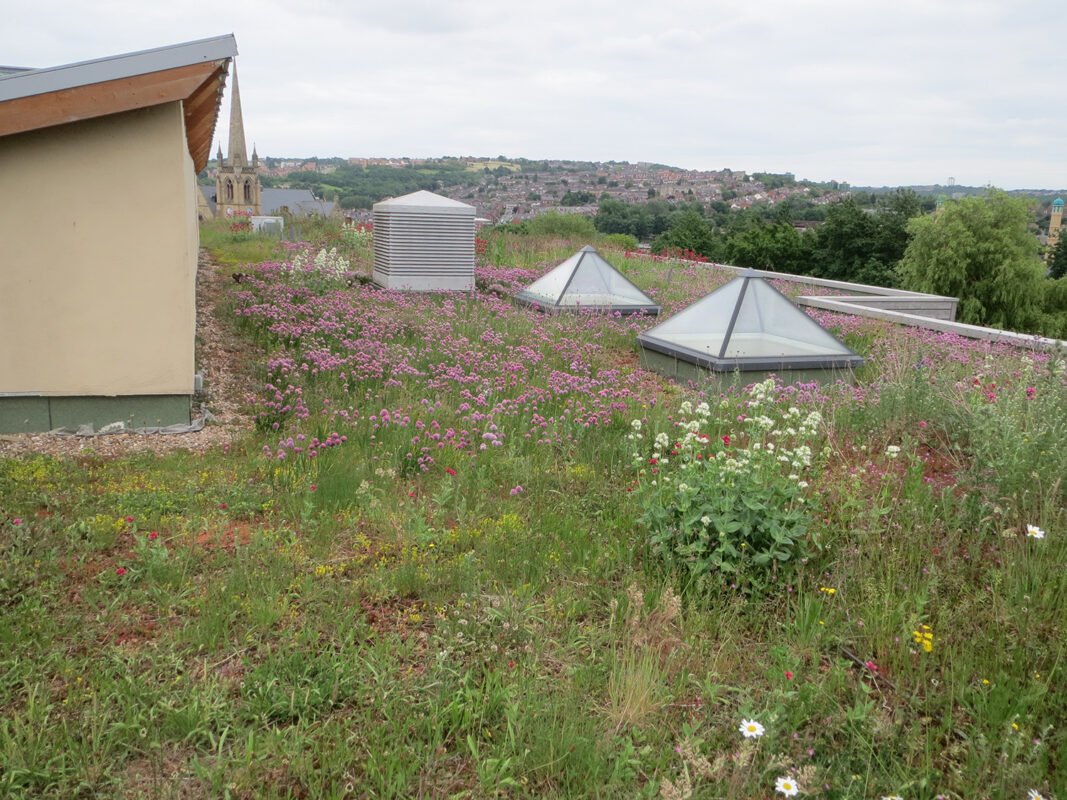
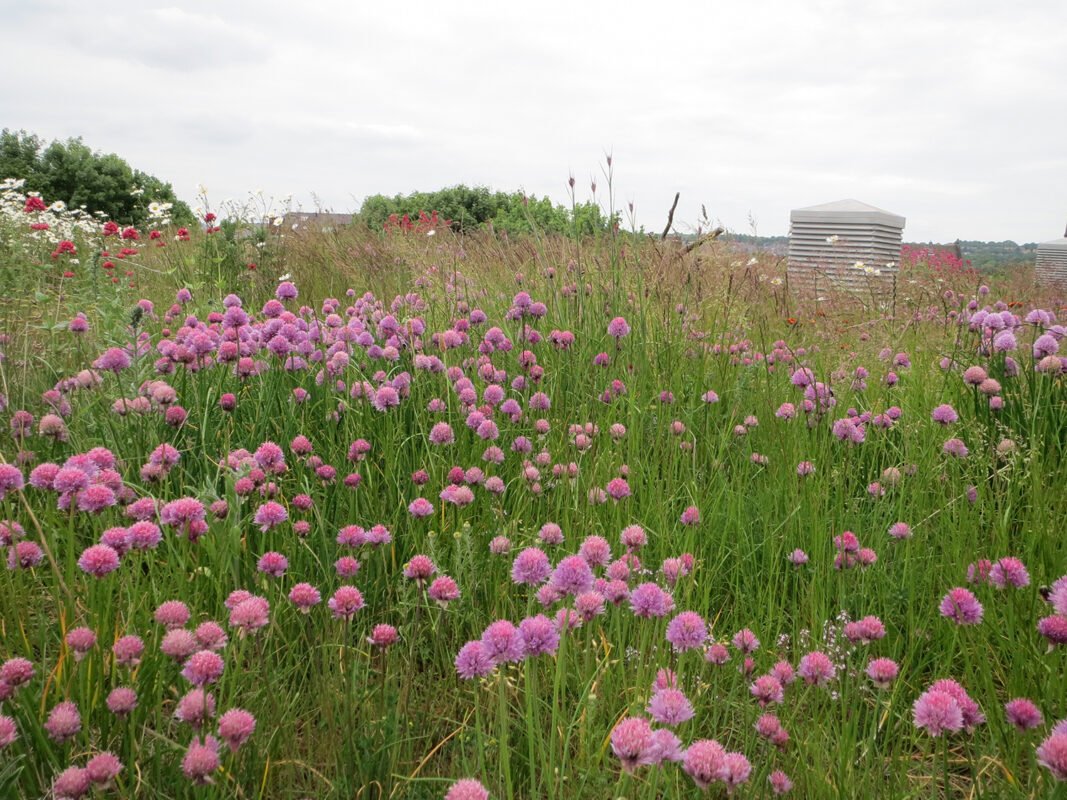
It is clear to see the importance of green roofs in creating healthier and more sustainable urban areas, and the inclusion of green and blue infrastructure is fast becoming integral in landscape-led design.
As part of our Green-Blue Infrastructure offering at TEP, we provide a comprehensive green roof design service which includes ecological and planting design, substrate and plant specifications, wider site drainage strategies, and supporting calculations for both Urban Greening Factor (UGF) and Biodiversity Net Gain (BNG). We are also able to design blue roofs and smart roofs in collaboration with trusted partners.
If you would like to hear more about our services, please email TEP’s Design Team at DesignTeam@tep.uk.com and we will be happy to help with your enquiry.
(All photos courtesy of TEP Associate Tom Young).








